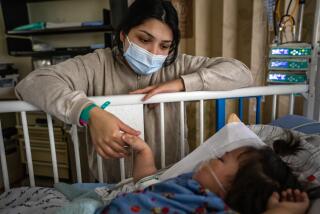Paula Rosenfield, ER Traffic Cop, Cedars-Sinai Medical Center
- Share via
The toddler with the blazing fever? Ibuprofen. The elderly man having trouble breathing? A gurney, stat. The fledgling chef whose hand got mangled in a Cuisinart? Bandage. What about the dozens of other waiting-room patients in varying degrees of misery, each with medical histories and vital signs to take, frightened family members in need of soothing, and always the same pointed question: How long before I see a doctor?
The answer depends largely on triage nurse Paula Rosenfield, who can be found several days a week, 7 a.m. to 3:30 p.m., in the emergency room at Cedars-Sinai Medical Center. To sort through people’s pain and determine which injuries and infirmities demand priority--as in, which of the 200 patients who pass through the ER while she’s on duty will wind up in one of its 32 beds first--Rosenfield has the Westside hospital’s written guidelines to help her. She also has more than 15 years of Cedars ER experience. But mostly she has eyes: Just how much agony does this patient appear to be in?
“A lot of times you can pacify people by putting them on a gurney and just getting them back there in the hallway,” Rosenfield says. To the 49-year-old nurse, triage logic--that a person suffering an apparent stroke must be treated before someone with the stomach flu, regardless of who got there first--is unassailable. Yet assail it hurting patients do. They march to her desk, past the television that’s usually tuned to CNN, to remind her that they want to be seen, now. That’s what they wanted an hour ago, two hours ago . . . Why else would I have gone to the emergency room in the middle of the day, damn it? She repeats that the staff is working as fast as it can, although if someone with a low-pain threshold and an over-inflated sense of self carries on too long, it’s time to roll out that pacifying gurney.
“We do see people at their worst because they are not feeling well,” acknowledges Rosenfield. “But a lot of these patients, once you start taking care of them, they become very nice, even if all you are doing is giving them an ice bag.”






